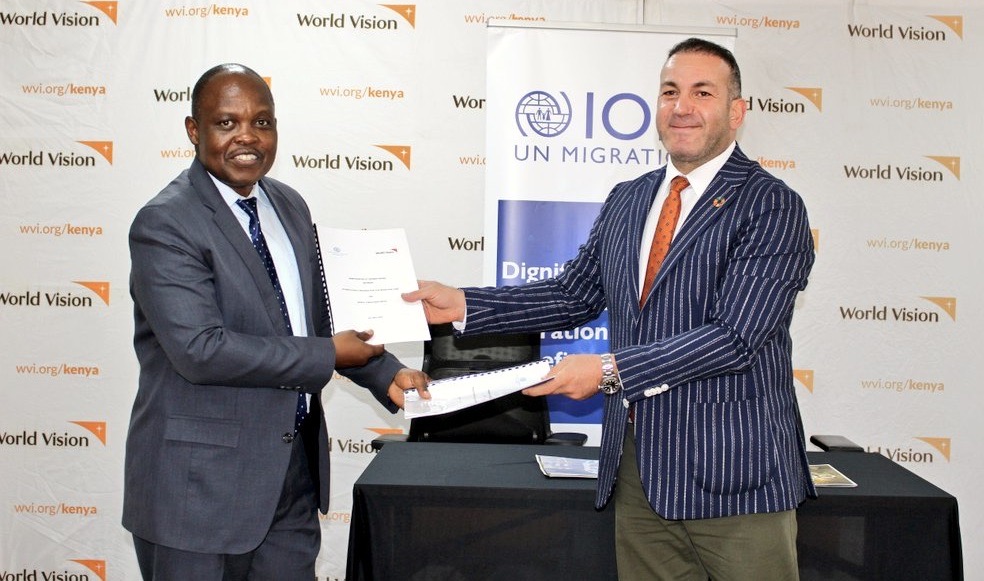World Vision and IOM partner to aid vulnerable internally displaced persons and disaster-affected populations in Kenya
By Ivy Muigai, Communications Specialist, World Vision Kenya
The International Organization for Migration (IOM) and World Vision in Kenya, have signed a Memorandum of Understanding (MOU) that will ensure both organisations collaborate in strengthening emergency response mechanisms for the most vulnerable communities, including Internally Displaced Persons (IDPs) in the country.
In a bid to cement their cooperation on areas of mutual interest, the two parties will enhance their collaboration in addressing the needs of vulnerable communities affected by natural and human-induced disasters, based on international and national humanitarian principles.
Emrah Güler, IOM Kenya Deputy Chief of Mission noted that this timely collaboration serves to increase collaborative work in the country to alleviate the suffering of IDPs and vulnerable disaster-affected populations.
"We are excited to work with World Vision to support the creation of improved conditions for return, reconciliation and stabilisation of communities affected by any type of internal or communal conflict and violence related to human-induced disasters through programmes designed together, given the expertise, resources and experience provided by both organisations,” Emrah Güler said.
He added that World Vision Kenya’s extensive coverage in 37 counties will significantly contribute to the success of the partnership.
The MOU also seeks to ease the suffering of IDPs given the impact of climate change that has affected the food security of over 3.5 million Kenyans by providing the necessary life-saving and protection assistance including non-food items as well as emergency and transitional shelter kits. It will also offer recovery and reintegration livelihood assistance in evacuation camps.
During the MOU signing ceremony at the World Vision Kenya offices in Nairobi, James Ang’awa, Ag. National Director for World Vision Kenya highlighted the critical role of partnerships in reaching the most vulnerable and affected displaced population, as well as petitioning government and local partners to enhance protection for vulnerable children and communities.
“This collaboration will support the strategic development of relevant programmes and activities to enhance ease of access to protection-related services for communities and children affected by disasters, as well as seek to reduce gender and vulnerability-sensitive disaster risks, among other objectives,” he said.

He highlighted the growing concern of young people giving birth in the IDP community which worsens the situation and inhibits ease of access to services, especially for children affected by disasters.
The refugee and asylum-seeker population in Kenya stood at over half a million as of 30th of April 2022, which comprises of 89 percent refugees and 11 percent asylum-seekers.
The collaboration will also leverage data to create an information management system for IDPs and vulnerable communities in support of the government’s efforts to improve multi-sectoral analysis of disaster-affected population’s movement, including IDPs’ urgent sectoral needs, gaps, protection issues and reintegration needs.
Having worked together in Kenya for over four years, the collaboration between IOM and World Vision Kenya is expected to greatly contribute to migration management and effectively identify and respond to the needs of the most vulnerable children and communities.